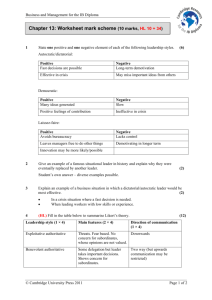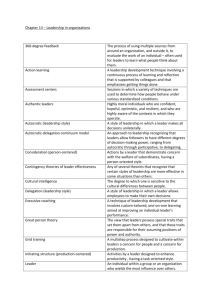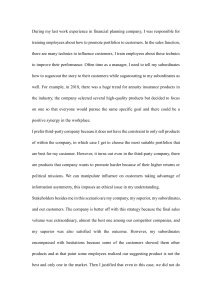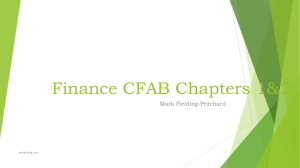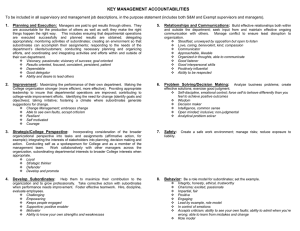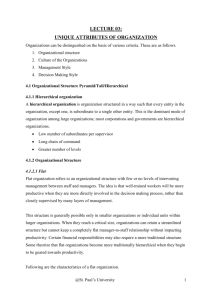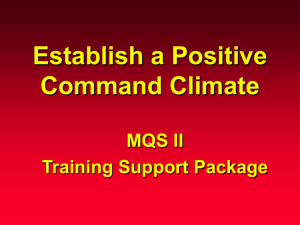Chapter 13: Worksheet mark scheme (10 marks, HL 10 + 34)
advertisement
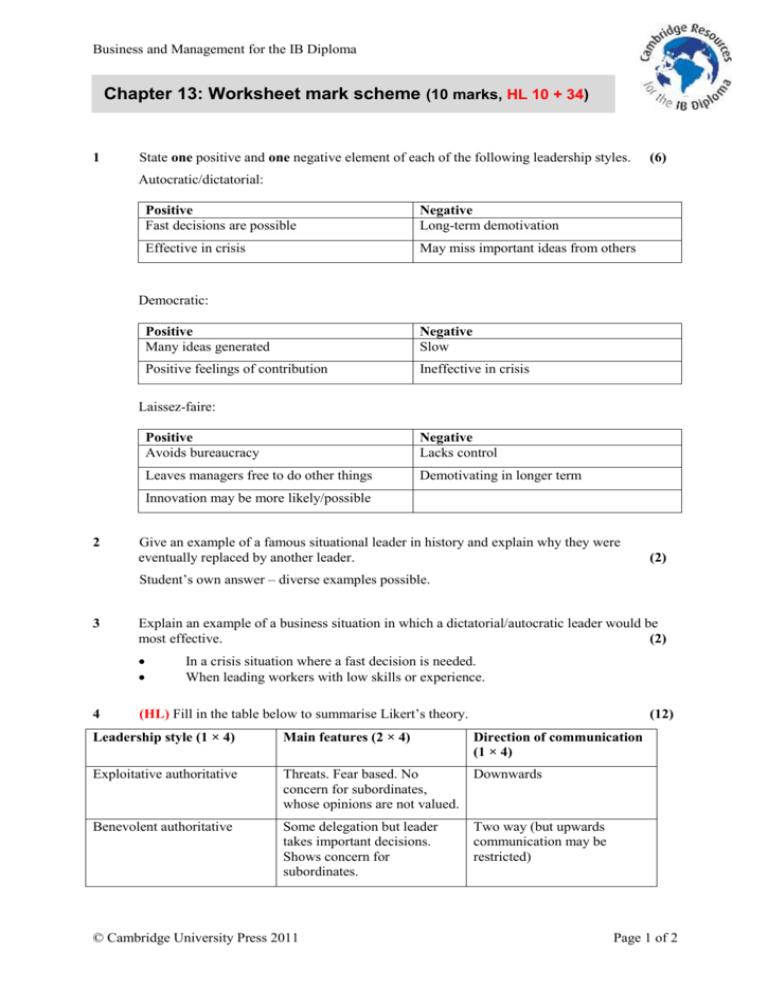
Business and Management for the IB Diploma Chapter 13: Worksheet mark scheme (10 marks, HL 10 + 34) 1 State one positive and one negative element of each of the following leadership styles. (6) Autocratic/dictatorial: Positive Fast decisions are possible Negative Long-term demotivation Effective in crisis May miss important ideas from others Democratic: Positive Many ideas generated Negative Slow Positive feelings of contribution Ineffective in crisis Laissez-faire: Positive Avoids bureaucracy Negative Lacks control Leaves managers free to do other things Demotivating in longer term Innovation may be more likely/possible 2 Give an example of a famous situational leader in history and explain why they were eventually replaced by another leader. (2) Student’s own answer – diverse examples possible. 3 Explain an example of a business situation in which a dictatorial/autocratic leader would be most effective. (2) 4 In a crisis situation where a fast decision is needed. When leading workers with low skills or experience. (HL) Fill in the table below to summarise Likert’s theory. (12) Leadership style (1 × 4) Main features (2 × 4) Exploitative authoritative Threats. Fear based. No Downwards concern for subordinates, whose opinions are not valued. Benevolent authoritative Some delegation but leader takes important decisions. Shows concern for subordinates. © Cambridge University Press 2011 Direction of communication (1 × 4) Two way (but upwards communication may be restricted) Page 1 of 2 Business and Management for the IB Diploma Consultative Views listened to but decisionmaking taken centrally. Views may be ignored. Two way Participative All views taken into consideration. Two way 5 (HL) What do Fiedler’s LPC scores refer to? a (2) These are least preferred co-worker scores on a list of questions about how good someone is to work with. b (HL) Give an example of a job that someone with a low LPC score would be well suited to. (1) An efficient computer programmer who gets on with the job and is not distracted by social interaction. (Many responses are possible.) 6 (HL) Draw Blake and Mouton’s managerial grid of leadership styles. (7) Give marks for correct labelling of each of the following: concern for people; concern for production; middle of the road; country club; impoverished; team leader; produce or perish. 7 What two major factors will decide the level of freedom awarded to subordinates on Tannenbaum and Schmidt’s leadership continuum? 8 (2) the situation the capability of the subordinates What are the five major functions of management (one to two words maximum) identified by: a Fayol? b (5) plan organise command co-ordinate control Drucker? (5) set objectives organise motivate measure develop © Cambridge University Press 2011 Page 2 of 2
